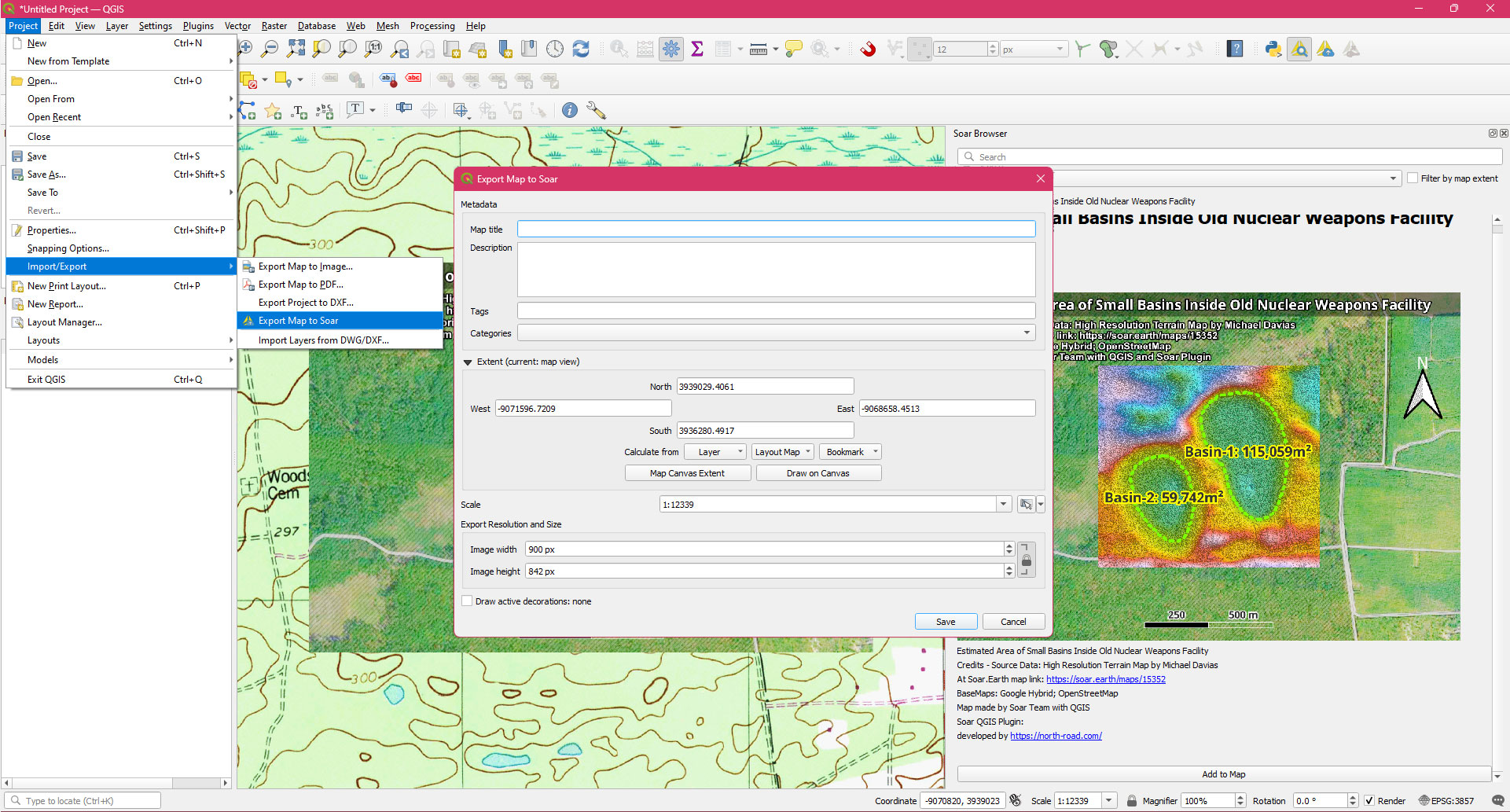2. Using the Soar Plugin
View and Import Soar maps to your QGIS Project
A. Searching maps on Soar
The Soar Browser panel allows users to search almost all of the maps available on
Soar and view them directly in QGIS. The Soar Browser panel gives you the option to directly search using keywords, as well as filtering by the map extent (the current area displayed on the users screen), and categories.
B. Loading a Soar map into QGIS
Once you’ve found the map that you’re interested in, select the result. Here you can see all of the metadata for the map including the user who uploaded the map, a direct link to view on
Soar, date created and updated, a larger preview image, and the map description. At the very bottom is the ‘Add to Map’ button, which once selected will add the current map to your QGIS project.
C. Using the Map
Now that the map has been loaded into your QGIS project you can begin using it in your workflow!
IMPORTANT NOTE: While the maps on
Soar are accessible for free, it’s important to note that the original creators and any credited sources maintain copyright of the map. Therefore, proper attribution to the user and credited sources is essential when using these maps as a basis for new works. Additionally, any stated licence requirements must be followed.
3. Uploading (exporting) your QGIS made maps into Soar’s new atlas of the world
A. Choosing your upload method
There are two ways to upload your project to Soar using the plugin.
- Upload a single layer - Great for rasters, like georeferenced images created from satellites, aircraft, drones, or even old digitised maps, or
- Upload Map - This will upload everything within a certain extent on your screen. This gives your creative control on which part of your map would be best shared.
B. Uploading a single layer:
This method is great for uploading a raster like a georeferenced image, such as a map or a picture taken by a satellite, aircraft or drone. To use this export option, go to the ‘Processing’ tab in the toolbar and select ‘Toolbox’. This will open the ‘Processing Toolbox’ panel. In here you will see a Soar option. Click the arrow next to the Soar logo and the ‘Publish dataset to Soar’ will appear. Select that option.
A new window will open allowing you to begin your upload process. Here you can select your source layer, input the map’s title, description, tags (keywords), select the category, and choose if you want to export the raw data, or the rendered layer. Once you have filled in this information you can select both checkboxes to state that this is your own work/you have followed the correct accreditation for any sources used, and that you agree to Soar’s Terms of Service. Once ready, select ‘Run’ and your map will then begin uploading to Soar!
C. Uploading a map extent
If you have multiple layers and don’t want to merge everything down into a single layer, this is a great option. To use this export option go to the ‘Project’ tab in the toolbar, ‘Import/Export’, ‘Export Map to Soar’. This will open up a window similar to the other option above. However, here you have the ability to manually select the area that you’d like to upload to Soar. You can calculate from a layer, a layout map, bookmark, the map canvas extent or even by drawing on the canvas. You also have the ability to select the scale, as well as the resolution and size of the map. Once you fill in the rest of your maps information you can then upload to Soar!

Exporting and uploading a map extent
4. Viewing your map in Soar
Congratulations! Your QGIS map is now available to share with the world on Soar’s digital atlas! It will be seen by an ever growing community of users ranging from journalists, students, mapping enthusiasts through to ever day armchair map nerds 🤓
This is YOUR map, and you can do with it what you want. You can share your hard work with family, friends, colleagues, communities, and more in a fun interactive format. Or, you can even share it via the cool
Interactive Embed feature that allows you to keep your map on your own website. For free!
If you have any questions, comments or feature suggestions, please feel free to reach out to us via our social media channels,
X (Twitter) or
LinkedIn, or via the QGIS
Telegram channel:


